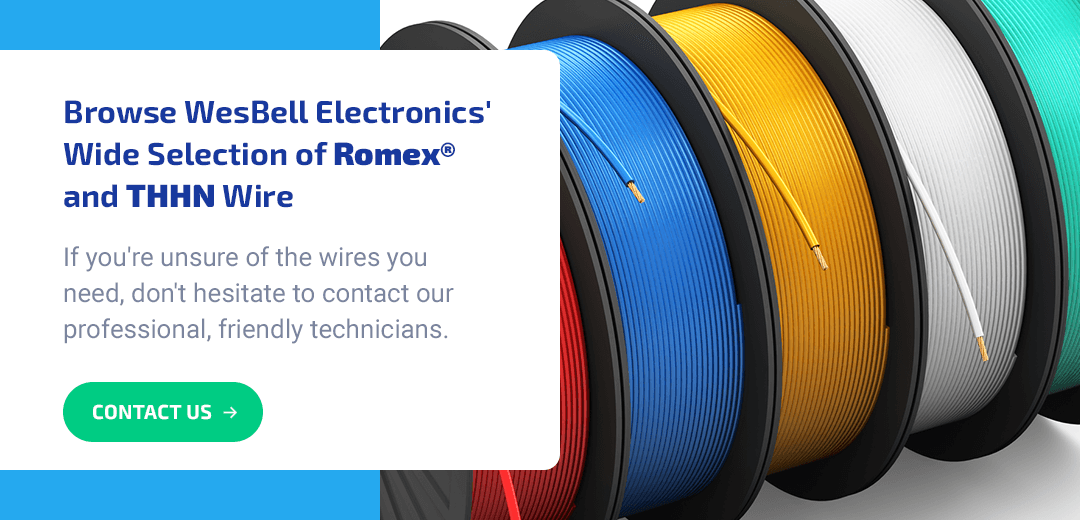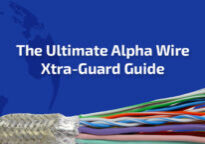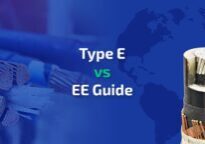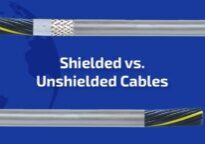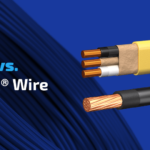
Mar 2, 2021
THHN vs Romex Wire
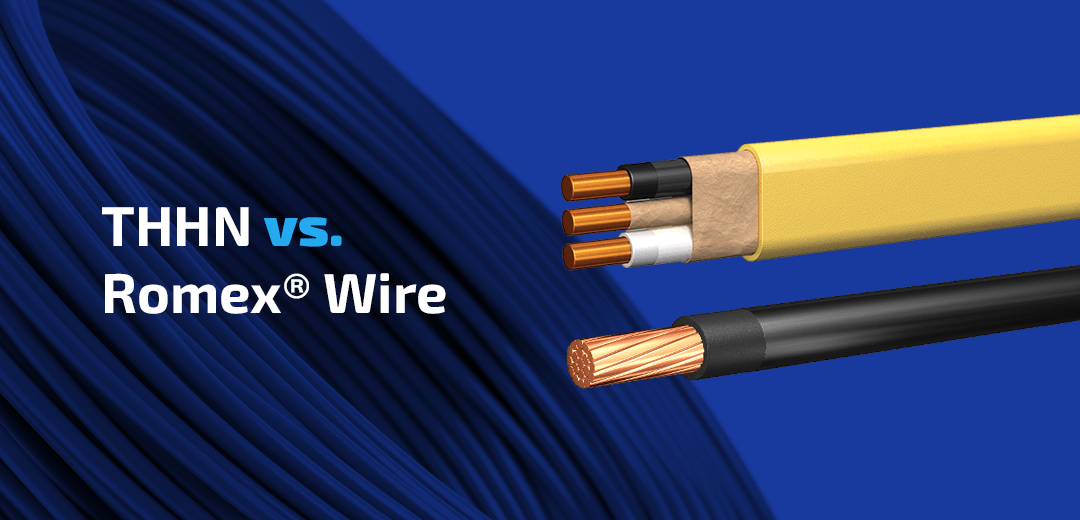
THHN and Romex® are two of the most commonly used electrical wire types. However, there are notable differences between the two. To understand which wire is best for your project, you must know the capabilities of each wire type. This article delves into the key THHN vs Romex differences, helping you understand which wiring solution might be best for your specific needs.
What Is Romex® Wire?
Romex® is an electrical cable suitable for various indoor wiring uses, primarily for small businesses and homes. This wide-reaching wire, which can be bought in many different sizes and configurations, features a distinctive jacket that allows it to be pulled easily through conduit.
It’s made out of two or three THHN wires combined with a grounding bare copper wire. Like the THHN wires, Romex wire can’t be used outside because of its minimal PVC jacket protection. However, these wires come in larger sizes than the thinner THHN wires; 14/2 and 6/3 are used widely as electrical wire, even though it can’t be used in conduit at all. The primary use for this type of wire is to run more than one conductor at a time through a separate grounding wire.
Romex® NM-B Wire
Romex® is a product from Southwire, a reputable cable and wire provider. The “NM-B” code refers to the wire’s nonmetallic (NM) sheath and primary use in branch (B) wiring. Romex® is also called SIMpull®, another Southerwire trademark that refers specifically to their jacketing, which makes pulling wire through conduit much easier. Many electricians and consumers also use the name “Romex®” generically to mean any wire that is NM-sheathed — similarly to how some people erroneously use “Kleenex” to mean any brand of facial tissue. However, you should only use the name Romex® to refer to Southwire’s cables with the Romex® brand name.
Romex® cables typically consist of multiple THHN wires bundled together and sheathed in polyvinyl chloride (PVC), making them suitable for indoor applications such as garages, interior walls and surface wiring above ground. Contractors often use these wires to connect electrical panels to appliances and lights. The cables can be sensitive and deteriorate quickly outdoors since they do not have sufficient protection to withstand exposure to the elements. Before beginning a wiring project, ensure you comply with National Electric Code (NEC) regulations. Local building codes also differ from state to state, so check with the building code department in your area to get your project approved before you run Romex® wire.
Romex® NM-B Wire Specifications
In addition to the PVC insulation, Romex® wires feature nylon jacketing, bare copper grounding and annealed soft copper conductors. These components mean Romex® NM-B wires are rated for:
- 600 volts
- Ampacity limit of 60 degrees Celsius
- Temperatures up to 90 degrees Celsius in dry environments
Romex® wire is available with two or three conductors and in sizes from 14 American Wire Gauge (AWG) to 2 AWG. Sizes are labeled with a slash to show the wire size and the conductor number. For example, 14/2 Romex® means all the wires are 14 AWG and there are two conductors. Common sizes are available in distinct colors to make identifying them easier.
- White jacket: Romex® 14/3 and 14/2
- Yellow jacket: Romex® 12/3 and 12/2
- Orange jacket: Romex® 10/3 and 10/2
- Gray jacket: Larger sizes between 8 AWG and 2 AWG
Romex® meets various standards, making it suitable for many uses. It complies with these specifications:
- Registration, Evaluation, Authorization and Restriction of Chemicals (REACH)
- Restriction of Hazardous Substances (RoHS)
- National Fire Protection Agency (NFPA) 70
- ASTM International B-3 and B-8
- UL Standard 83 and 719
Romex® vs. Other Cables
You may be having trouble choosing between Romex® and other common cable types. Understanding the differences can help you decide.
- Underground feeder (UF-B) cables: Underground feeder (UF-B) cables share many similarities with Romex® wires. However, one notable difference is that UF-B cables have a more durable outer sheath that makes them suitable for underground and outdoor applications.
- THWN and THHN cables: If you only need one wire, you can choose individual thermoplastic high-heat water-resistant nylon (THWN) or thermoplastic high-heat nylon (THHN) wires. Romex® cables consist of these conductor wires bundled together. We discuss THHN wires in more detail below.
- Type MC cables: Type MC cables feature THHN wires plus an extra green THHN wire that is used as a ground. This THHN ground means you can use this cable in conduit or outdoors because moisture cannot reach bare copper. The “MC” means “metal-clad” and refers to the aluminum jacket, which makes it easier to push the cable through conduit.
What Is THHN Wire?
THHN is the industry’s most popular single conductor electrical wire type. THHN wire means, “thermoplastic high-heat nylon,” which refers to components and characteristics of the wire’s jacket and insulation. Its capabilities and features have made it one of the most popular construction wires, and it passes most building codes.
It’s covered with a PVC jacket and nylon coating. This wire is a bare one-conductor copper wire and is often used indoors or in conduit. The most popular sizes for THHN wire are, 10, 12 and 4/0, though other sizes are available for nonstandard projects. The PVC jacket is one of the cheapest forms of insulation for this type of wire and the nylon coating provides waterproofing and slight lubrication for placing in a conduit. However, because of this wire’s ‘bare essential’ nature, it isn’t recommended for outside use.
Applications
Unlike, Romex®, THHN is a generic type of wire rather than a brand name. Contractors commonly use THHN wire to run power to lights and outlets in buildings, but it’s extremely versatile and works well for almost every application, indoors and out. THHN is sometimes also called THWN or THHN-2. A few manufacturers also make THW, which is the same as THHN but without nylon. If you need nylon-free wire, one alternative is hook-up wire. You can also contact us at WesBell for help finding an appropriate solution.
- Indoor applications: THHN cables are somewhat inflexible, so they are often bundled together in indoor applications to facilitate installation and planning. With a 600-volt rating, this wire can be used for a wide variety of appliances ranging from garbage disposals to water heaters. THHN is also resistant to water, oil, grease and other machine byproducts, so you can safely use it for industrial applications.
- Outdoor applications: THHN’s resistance to heat and various substances means it is also suitable for many outdoor uses, such as lighting on commercial buildings. When it comes to outdoor installations, contractors often bundle outdoor THHN with UF-B jackets. If you want to install THHN wires underground, you must first insert them in conduit, but they don’t require any additional protection.
 THHN Wire Specifications
THHN Wire Specifications
Several benefits are associated with each component in the THHN acronym:
- Thermoplastic: This refers to thermoplastic insulation, which includes materials such as polyethylene (PE) and polyvinyl chloride (PVC). It’s easy to work with and strip these materials; they come in several colors.
- High heat resistance: THHN wires are rated for temperatures as high as 90 degrees Celsius, making them appropriate for most building types.
- Nylon coating: A nylon jacket wraps around the wire, protecting it from cuts and abrasions as well as destructive agents such as chemicals, oil and water.
THHN wire is available in 10 colors:
- Brown
- Black
- Blue
- Gray
- Red
- Orange
- Violet
- Yellow
- White
- Green with a yellow stripe
These colors don’t specify any particular characteristics of the wire but help you differentiate between them if you work with bundles of wires.
THHN wire is available in many sizes, each serving a different purpose. Standard AWG sizes range from 14 AWG to 1 AWG. Larger sizes are available from 1/0 to 4/,0 and 250thousands circular mils (MCM) to 600 MCM.
- Circuit sizes: THHN 10 AWG, 12 AWG and 14 AWG are available as solid or stranded wires. These wire sizes are commonly found in Romex® cables.
- Other AWG sizes: THHN 1 AWG, 2 AWG, 4 AWG, 6 AWG and 8 AWG sizes are appropriate for applications that require more power. The larger sizes are suitable for stoves, hot tubs, dryers and other similar appliances.
- Larger sizes: The largest THHN cables are typically used to bring power from the street to an electrical box in a home or other building.
THHN vs. Other Cables
Since THHN wire is so versatile, you may wonder why you would choose other wire types. Here are two other common wire types to consider:
- Romex® cables: As mentioned earlier, Romex® is typically made by bundling THHN wires and sheathing them in PVC, which makes the cables easier to push through conduit. Romex® wire is designed for indoor use only and features a less durable outer jacket, making it more reasonably priced for contractors.
- UF-B cables: Like Romex®, UF-B cables are also made with THHN wires. However, UF-B cables feature a more durable outer jacket, making them suitable for outdoor and underground applications without needing to run through conduit.
Romex® Wire Advantages & Disadvantages
One of Romex® wire’s most significant benefits is that it comes in bundles to run multiple wires simultaneously, with 6/3 and 14/2 commonly used electrical wire sizes. Other advantages include:
- Wide variety of sizes: Romex® wires come in various sizes, ranging from 14 to 2 AWG. You can also choose two or three conductors.
- Designed for home and small business use: Romex® NM-B primarily uses branch wiring in homes. If your project involves running power from electrical panels to lights and appliances in your home or small business, Romex® is probably a good choice. Due to its PVC covering, it can also be used in interior walls, garages and above-ground surfaces.
- Color coding makes identification easy: Romex® wire is color-coded, making it easier to determine the size of the cable simply by looking at it.
However, Romex® is not without its drawbacks. Potential disadvantages of Romex® wire include:
- Cannot be used outside: Romex® is not the market’s most durable type of wire. Due to its minimal protection, it will quickly deteriorate after continuous exposure to the elements.
- Sensitive at entry and exit points: If you’re not careful, you can easily damage the wires at entry and exit points. These points must be fitted with the right connectors or brushings.
- Requires specific conduit: You must pick the appropriate size conduit. Putting the wire in conduits that are too small for the size of the cable might bind, crush, or otherwise damage the sheathing.
Advantages & Disadvantages of THHN Wire
As we mentioned above, THHN wire is the most popular in the industry — and that says something. Some other advantages of THHN wire include the following:
- It meets most building codes: If you use THHN wire for your project, it will likely meet code. However, never assume that your project will meet code — always get your project approved with your local building code department before beginning work.
- It’s exceptionally heat-resistant: THHN wires are rated to withstand temperatures as high as 90 degrees Celsius.
- Its nylon coating offers superior protection: It protects the copper wire against abrasions, cuts, chemicals, oil, water and more.
The main disadvantage of working with THHN wire is that it cannot be used outside. You’ll likely want to use UF-B cables for outdoor or underground use.
Which Wire Should You Choose for Your Needs?
Consider using Romex® if one or more of the following describes your situation:
- You’re doing branch wiring in your home or small business.
- Your wires will not be exposed to higher temperatures or other harsher interior conditions.
- Your jurisdiction approves your use of Romex® wiring.
However, you should consider THHN wire if any of these describe your situation:
- The wires you plan to install will be exposed to higher temperatures.
- You don’t feel comfortable handling Romex® wires, which require more delicacy.
- Your jurisdiction will not approve your Romex® wire application.
Browse WesBell Electronics’ Wide Selection of Romex® and THHN Wire
WesBell Electronics sells Southwire’s Romex® wire, a cost-effective, long-lasting cable perfect for various indoor applications. We also carry many types of THHN cables in a wide range of sizes suitable for any project, and our prices for THHN electric wire are especially cost-effective. At WesBell, we know most buyers want specific lengths to minimize waste, which is why we sell our cables by the foot at any length and include bulk purchase discounts.
If you’re unsure of the wires you need, don’t hesitate to contact our professional, friendly technicians, who will be glad to help you choose the appropriate wire for your application. In addition to excellent customer support, we can also prepare cables for your project, including cutting and stripping.

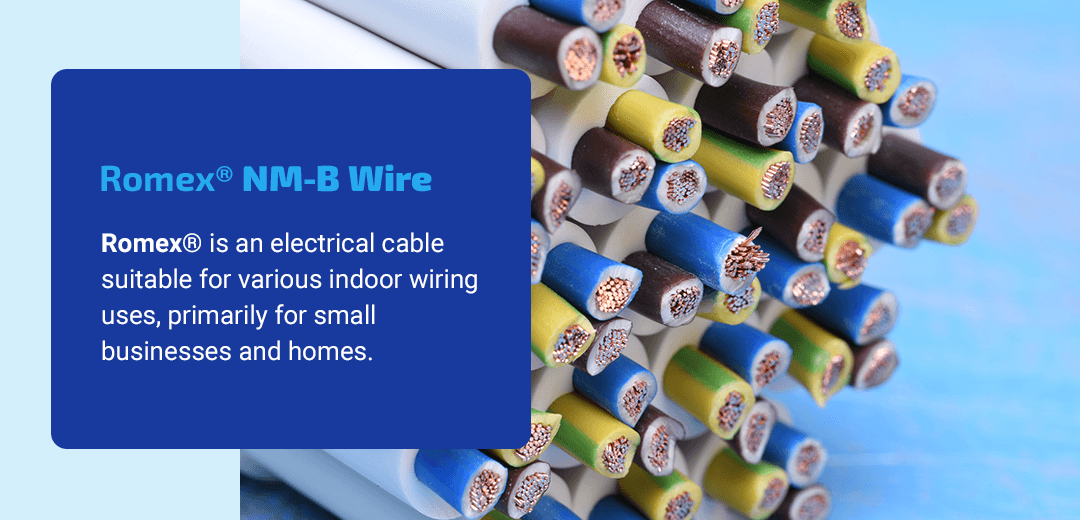
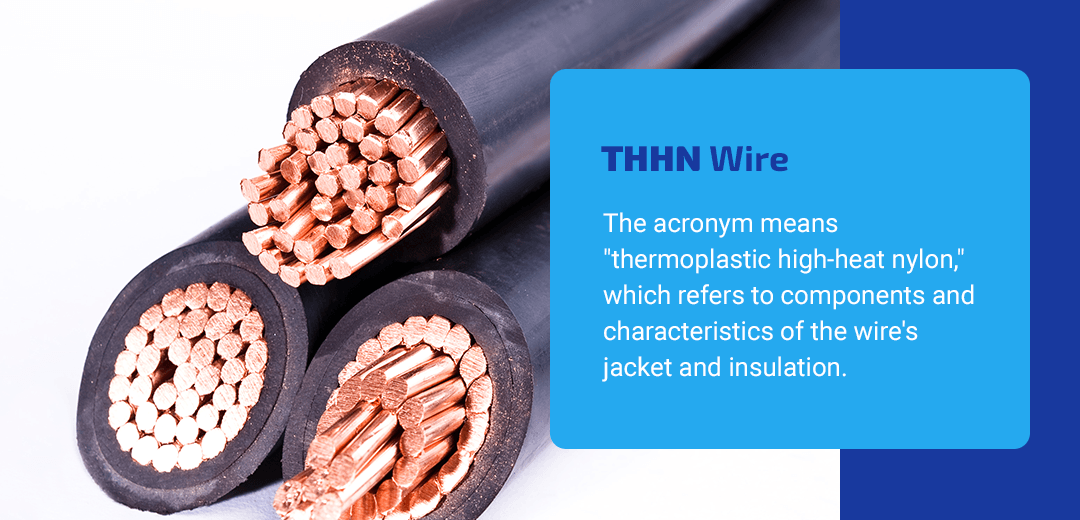
 THHN Wire Specifications
THHN Wire Specifications